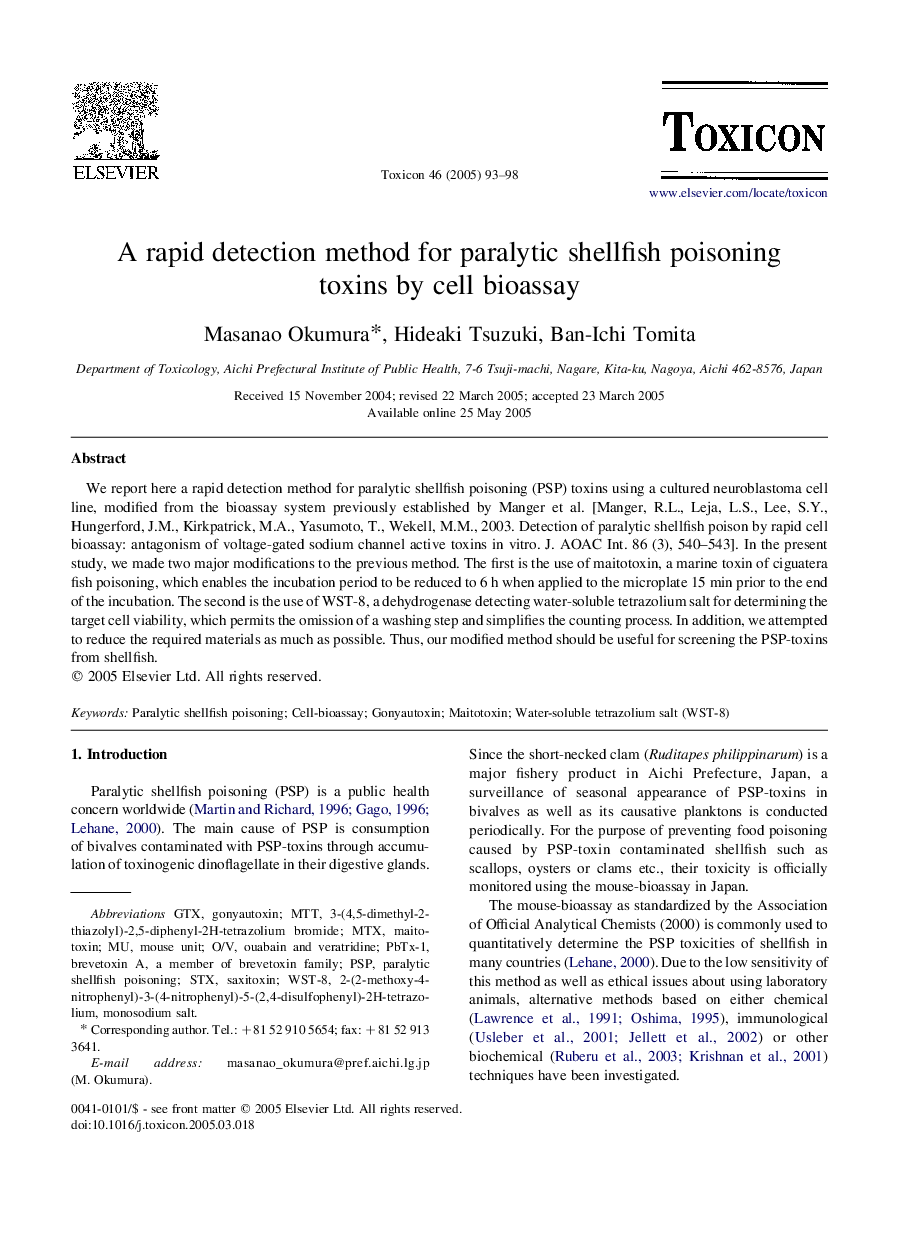| Article ID | Journal | Published Year | Pages | File Type |
|---|---|---|---|---|
| 10880410 | Toxicon | 2005 | 6 Pages |
Abstract
We report here a rapid detection method for paralytic shellfish poisoning (PSP) toxins using a cultured neuroblastoma cell line, modified from the bioassay system previously established by Manger et al. [Manger, R.L., Leja, L.S., Lee, S.Y., Hungerford, J.M., Kirkpatrick, M.A., Yasumoto, T., Wekell, M.M., 2003. Detection of paralytic shellfish poison by rapid cell bioassay: antagonism of voltage-gated sodium channel active toxins in vitro. J. AOAC Int. 86 (3), 540-543]. In the present study, we made two major modifications to the previous method. The first is the use of maitotoxin, a marine toxin of ciguatera fish poisoning, which enables the incubation period to be reduced to 6Â h when applied to the microplate 15Â min prior to the end of the incubation. The second is the use of WST-8, a dehydrogenase detecting water-soluble tetrazolium salt for determining the target cell viability, which permits the omission of a washing step and simplifies the counting process. In addition, we attempted to reduce the required materials as much as possible. Thus, our modified method should be useful for screening the PSP-toxins from shellfish.
Keywords
Related Topics
Life Sciences
Biochemistry, Genetics and Molecular Biology
Biochemistry, Genetics and Molecular Biology (General)
Authors
Masanao Okumura, Hideaki Tsuzuki, Ban-Ichi Tomita,
